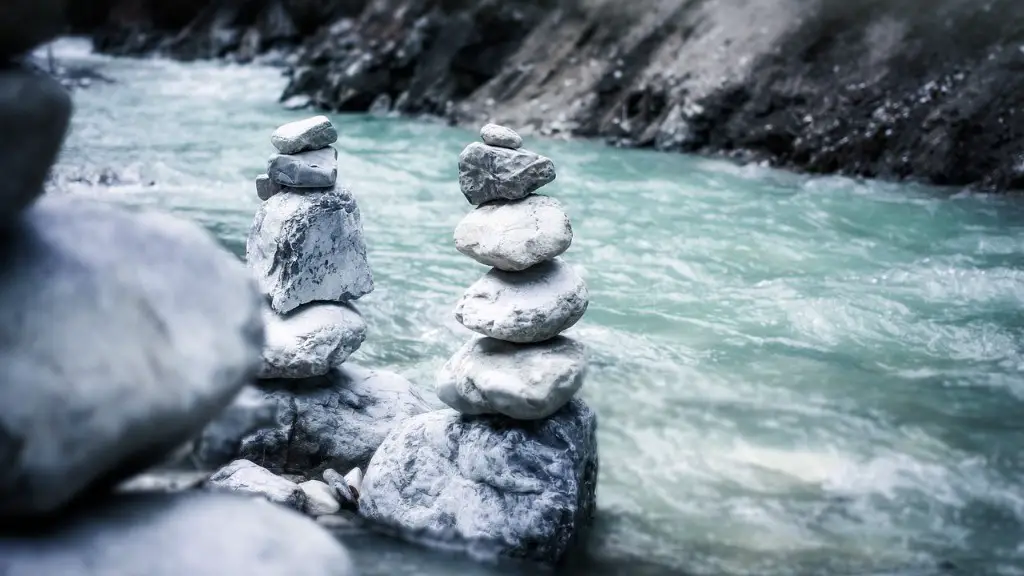How Did Ancient Egypt Use The Nile River?
The Nile River is one of the longest rivers in the world, stretching for more than 4,100 miles. It has been an integral part of life in the Middle East and North Africa for centuries, and the ancient Egyptians were some of the most prolific users of the waters of this mighty river. They harnessed the power of the Nile for irrigation, transportation and food. In this article, we will explore how the ancient Egyptians used the Nile River.
The ancient Egyptians saw the Nile as a source of sustenance and life. They saw it as a symbol of their country’s wealth and as a physical boundary between them and the rest of the world. The Nile was the lifeblood of the ancient Egyptian civilization, providing them with water for agriculture, transportation and even drinking water. The Egyptians built a vast system of canals and dams to control and regulate the flow of water in the Nile.
Throughout their long history, the ancient Egyptians used the Nile for irrigation. They built canals and channels to divert water from the river and bring it to their farms and fields. This allowed them to grow a variety of crops, such as wheat, barley, flax and cotton. This water was also used to fill their many irrigation reservoirs, ensuring that the water was always available for agricultural purposes. The Nile was also an important transportation route, allowing traders to sail along the river and reach distant cities.
The ancient Egyptians also used the Nile for food. They fished in the river and its many tributaries, and they hunted birds in its reed marshes. It is believed that Egypt was the first country to domesticate geese and ducks, and that these birds were mainly bred in the Nile Valley. The Egyptians also used the river to transport food from one region to another.
The Nile was also an important spiritual object for the ancient Egyptians. They believed that it provided them with sustenance and that its gods were responsible for their prosperity. The Egyptians built elaborate temples to honor the gods of the Nile, and many of these remain standing to this day. The Nile was also an important source of flooding, bringing fertile silt to the banks of the river, which allowed for a greater variety of crops to be grown in the region.
The Nile was an incredibly important factor in the development of the ancient Egyptian civilization. They used the river for cultivation, transportation and food, and they honored it with elaborate temples and rituals. This mighty river remains an important part of life in the Middle East and North Africa to this day.
Trade and Commerce
The Egyptians used the Nile River as a major transportation route, mainly for the trading of goods and services. The river was used as a trade route to cities and states that were far away, and this allowed them to expand their trade and commerce. As the ancient Egyptian civilization advanced, so did their access to trading partners in the area.
The Egyptians used boats to transport people and goods, and they built and maintained an extensive network of ports and harbors along the riverbanks. This network allowed for the safe, smooth and efficient transfer of goods, and it had a significant impact on the ancient Egyptian economy. Thanks to this network, the Egyptians were able to develop and maintain strong trading ties with their neighbors.
The Nile was also an important factor in the spread of religion and culture. As people and goods traveled along the river, they brought with them new ideas and ways of life. This in turn allowed the Egyptians to learn and share with their neighbors, and they went on to create some of the earliest forms of organized religion and culture.
The Nile had a major impact on the economy of ancient Egypt, and it remains an important transportation route to this day. In modern times, the river continues to be used as an important trade route, and it also serves as a major source of hydroelectric power.
Architecture
The ancient Egyptians were masterful builders, and many of their monuments, tombs and temples still stand to this day. The Egyptians used the Nile for much of their construction work, as it was an easy and reliable way to transport large blocks of stone from one place to another. They used boats to bring stones from distant quarries upstream, allowing them to build monuments of incredible size and scale.
The Egyptians also used the Nile for transportation of blocks of clay, which they mixed with straw and baked to create bricks. These bricks were then used to construct buildings, especially those in Cairo. The bricks were also used to make statues and sculptures, which stand as a testament to the skill of the Egyptians.
The Nile was also an important factor in the development of the ancient Egyptian architecture. The Nile provided the ancient Egyptians with an abundance of sand, which they used to construct colossal monuments. They also used the river to build piers and docks, and many of these remain standing to this day.
The ancient Egyptians were able to make use of the resources available to them in the river. These resources allowed them to build monuments, statues and sculptures that stand to this day as a testament to their greatness.
Development of Religion
The ancient Egyptians saw the Nile as a source of sustenance and fertility. It was necessary for their agricultural and trading activities, and it provided them with an abundance of food and resources. They also saw the Nile as a spiritual entity, and it was worshipped as a god in ancient Egyptian religion.
The Egyptians believed that the Nile was the source of their prosperity and that the gods of the river provided them with sustenance and fertility. They built temples and monuments to honor the gods of the Nile, and its waters were used in many religious rituals and ceremonies. The Egyptians also credited the Nile with helping them develop their written language, and many of their oldest religious texts were composed near the Nile’s banks. The Nile was an important part of ancient Egyptian religion and culture.
The ancient Egyptians viewed the river as a source of life and fertility, and it has remained a key part of religion in the Middle East and North Africa to this day. The Nile provided a physical and spiritual boundary between the ancient Egyptians and their neighbors, and it remains an important symbol in the region.
The ancient Egyptians credited the river with providing them with fertility and sustenance, and they built elaborate temples and monuments to honor its gods. This connection between the Nile and religion still exists to this day.
Legacy
The legacy of the ancient Egyptians and the Nile River is still visible in the present-day Middle East and North Africa. The Egyptians’ incredible achievements, such as their irrigation systems and monumental architecture, still stand as a testament to the skill of their engineers and architects. The Nile continues to be a major source of water and sustenance for millions of people in the region.
The Egyptians were also masters of writing, and many of their oldest religious texts were composed near the banks of the Nile. The Nile also provided the ancient Egyptians with access to trading partners from far away places, allowing them to expand their trade and commerce.
The ancient Egyptians believed that their prosperity was due to the god of the Nile, and this belief is still held by many people in the region. The river remains an important symbol of life and fertility, and its waters still provide sustenance for millions of people in the region.
The legacy of the ancient Egyptians and the Nile River will live on for many years to come. They used the river for many purposes, and its waters continue to be a vital source of food and water to this day.
Environmental Impact
The ancient Egyptians understood the importance and the fragility of the environment. They had to find ways to make the best use of the resources available, and they had to understand how changes in the environment would affect them. They were careful stewards of the land, and their use of the resources at their disposal had an important impact on the protection and conservation of the environment.
The ancient Egyptians also used the Nile River for sustenance and fertility. They built dams to control the flow of water, and they built canals to bring the water to their farms and fields. This allowed them to make the best use of the resources available to them. However, they also had an environmental impact. The construction of dams and canals changed the flow of the river and disrupted the natural balance of the ecosystem.
The Nile continues to be a major source of water and sustenance for millions of people, and it remains an important part of the region’s culture and identity. The river also continues to be an important factor in the region’s economy, and its waters are still used by many people for irrigation and transportation. However, the modern uses of the Nile River have also had an environmental impact, and there are still challenges to be addressed in order to protect and conserve the river and its ecosystem.
The ancient Egyptians were able to make the best use of the resources available to them, and their legacy still lives on today. They had a deep understanding of the environment, and this is something that we can still learn from today.





